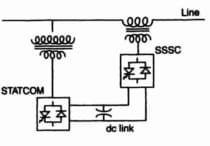1. The motor used in mines is_________.
a. DC shunt motor
b. DC series motor
c. Flame-proof squirrel cage induction or wound rotor motor
d. Any of the above
2. The motor used in punches, presses and shears is_______.
a. DC series or shunt motors
b. High slip squirrel cage or wound rotor induction motor
c. DC cumulative compound motor
d. Both (b) and (c)
a. Permanent magnet synchronous motor
b. Universal motor
c. Reluctance motor
d. Induction motor
4. A perfect black body is one which________.
a. Absorbs all incident radiations
b. Reflects all incident radiations
c. Transmits all incident radiations
d. All of the above
5. For the transmission of heat from one body to another it is essential that________.
a. At least one of the bodies has some source of heating
b. Both bodies are in contact
c. The two bodies are at different radiations
d. Both bodies are solids
6. Heat is transferred simultaneously by conduction, convection and radiation___________.
a. Through the surface of the insulated pipe carrying steam
b. Inside boiler furnaces
c. From refrigerator coils to refrigerator freezer
d. During melting of ice
7. The highest value of thermal conductivity is for__________.
a. Aluminium
b. Brass
c. Copper
d. Iron
8. The highest value of thermal conductivity is for____________.
a. Steam
b. Melting ice
c. Solid ice
d. Water
9. The thermal conductivity will be highest in case of____________.
a. Concrete having 0.4% reinforcement
b. Concrete having 10% moisture by volume
c. Concrete having 10% moisture by volume and 0.4% reinforcement
d. Dry concrete
10. A body reflecting entire radiations incidenting on it is called the _______.
a. Transparent body
b. Black body
c. Gray body
d. White body
a. The position of the heater
b. The surface area of the heater
c. The temperature of heating element above the surroundings
d. All of the above
12. The material of the heating element should be_________.
a. Of high temperature coefficient
b. Of low melting point
c. Of low resistivity
d. Such that it may withstand the required temperature without getting oxidised
13. The material to be used for heating element should be of high resistivity so as to_________.
a. Increase the life of heating element
b. Reduce the effect of oxidation
c. Reduce the length of heating element
d. Produce large amount of heat
14. The material to be used for heating element should be of low temperature coefficient so as to_________.
a. Avoid the initial rush of current
b. Reduce the effect of oxidation
c. Avoid change in kW rating with temperature
d. Both (a) and (c)
d. Eureka
a. Nickel-Cr-Fe alloy
b. Copper
c. Silicon carbide
d. Nichrome
17. For radiant heating around 2,000*C the heating elements used should be of material_________.
a. Stainless
b. Carbon
c. Copper alloy
d. Tungsten alloy
b. As an insulator
c. For dielectric heating
d. All of the above
a. Variation of resistance of heating circuit
b. Variation of operating voltage
c. Switching on and off the supply periodically
d. All of the above
21. For temperature control in resistance furnaces resistance variation can be affected by connecting resistance elements in__________.
a. Series-parallel
b. Series
c. Parallel
d. Star or delta
e. Any of the above
22. The simplest and most commonly used method for temperature control is_________.
a. Transformer tappings
b. Use of variable number of heating elements
c. Change of connections of
heating circuit
d. External series resistance in the heating circuit
23. The device necessarily used for automatic temperature control in a furnace is___________.
a. Thermostat
b. Auto-transformer
c. Thermocouple
d. Any of the above
24. Control of power input to salt-bath furnace is affected by_________.
a. Varying the depth of immersion of electrodes
b. Varying the distance between the electrodes
c. Both (a) and (b)
d. None of (a) and (b)
25. The temperature inside a furnace is usually measured by________.
a. Optical pyrometer
b. Alcohol thermometer
c. Mercury thermometer
d. Any of the above
26. In a resistance furnace the atmosphere is _________.
a. Deoxidising
b. Oxidising
c. Neutral
d. Reducing
- Electric Drives and Motors MCQ Part-1
- Electric Drives and motors MCQ Part-2
- Electric Drives and Motors MCQ Part-3
- Electric Drives and Motors MCQ Part-4
- Electric Drives and Motors MCQ Part-6
- Electric Drives and Motors MCQ Part-7
- Electric Drives and Motors MCQ Part-8
- Electric Drives and Motors MCQ Part-9
- Electric Drives and Motors MCQ Part-10





0 Comments
If you have any doubt, feel free to ask.